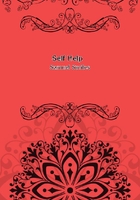
第60章
Still more romantic and adventurous was the career of Benvenuto Cellini, the marvellous gold worker, painter, sculptor, engraver, engineer, and author. His life, as told by himself, is one of the most extraordinary autobiographies ever written. Giovanni Cellini, his father, was one of the Court musicians to Lorenzo de Medici at Florence; and his highest ambition concerning his son Benvenuto was that he should become an expert player on the flute. But Giovanni having lost his appointment, found it necessary to send his son to learn some trade, and he was apprenticed to a goldsmith. The boy had already displayed a love of drawing and of art; and, applying himself to his business, he soon became a dexterous workman.
Having got mixed up in a quarrel with some of the townspeople, he was banished for six months, during which period he worked with a goldsmith at Sienna, gaining further experience in jewellery and gold-working.
His father still insisting on his becoming a flute-player, Benvenuto continued to practise on the instrument, though he detested it. His chief pleasure was in art, which he pursued with enthusiasm. Returning to Florence, he carefully studied the designs of Leonardo da Vinci and Michael Angelo; and, still further to improve himself in gold-working, he went on foot to Rome, where he met with a variety of adventures. He returned to Florence with the reputation of being a most expert worker in the precious metals, and his skill was soon in great request. But being of an irascible temper, he was constantly getting into scrapes, and was frequently under the necessity of flying for his life. Thus he fled from Florence in the disguise of a friar, again taking refuge at Sienna, and afterwards at Rome.
During his second residence in Rome, Cellini met with extensive patronage, and he was taken into the Pope's service in the double capacity of goldsmith and musician. He was constantly studying and improving himself by acquaintance with the works of the best masters. He mounted jewels, finished enamels, engraved seals, and designed and executed works in gold, silver, and bronze, in such a style as to excel all other artists. Whenever he heard of a goldsmith who was famous in any particular branch, he immediately determined to surpass him. Thus it was that he rivalled the medals of one, the enamels of another, and the jewellery of a third; in fact, there was not a branch of his business that he did not feel impelled to excel in.
Working in this spirit, it is not so wonderful that Cellini should have been able to accomplish so much. He was a man of indefatigable activity, and was constantly on the move. At one time we find him at Florence, at another at Rome; then he is at Mantua, at Rome, at Naples, and back to Florence again; then at Venice, and in Paris, making all his long journeys on horseback.
He could not carry much luggage with him; so, wherever he went, he usually began by making his own tools. He not only designed his works, but executed them himself, - hammered and carved, and cast and shaped them with his own hands. Indeed, his works have the impress of genius so clearly stamped upon them, that they could never have been designed by one person, and executed by another.
The humblest article - a buckle for a lady's girdle, a seal, a locket, a brooch, a ring, or a button - became in his hands a beautiful work of art.
Cellini was remarkable for his readiness and dexterity in handicraft. One day a surgeon entered the shop of Raffaello del Moro, the goldsmith, to perform an operation on his daughter's hand. On looking at the surgeon's instruments, Cellini, who was present, found them rude and clumsy, as they usually were in those days, and he asked the surgeon to proceed no further with the operation for a quarter of an hour. He then ran to his shop, and taking a piece of the finest steel, wrought out of it a beautifully finished knife, with which the operation was successfully performed.
Among the statues executed by Cellini, the most important are the silver figure of Jupiter, executed at Paris for Francis I., and the Perseus, executed in bronze for the Grand Duke Cosmo of Florence.
He also executed statues in marble of Apollo, Hyacinthus, Narcissus, and Neptune. The extraordinary incidents connected with the casting of the Perseus were peculiarly illustrative of the remarkable character of the man.
The Grand Duke having expressed a decided opinion that the model, when shown to him in wax, could not possibly be cast in bronze, Cellini was immediately stimulated by the predicted impossibility, not only to attempt, but to do it. He first made the clay model, baked it, and covered it with wax, which he shaped into the perfect form of a statue. Then coating the wax with a sort of earth, he baked the second covering, during which the wax dissolved and escaped, leaving the space between the two layers for the reception of the metal. To avoid disturbance, the latter process was conducted in a pit dug immediately under the furnace, from which the liquid metal was to be introduced by pipes and apertures into the mould prepared for it.